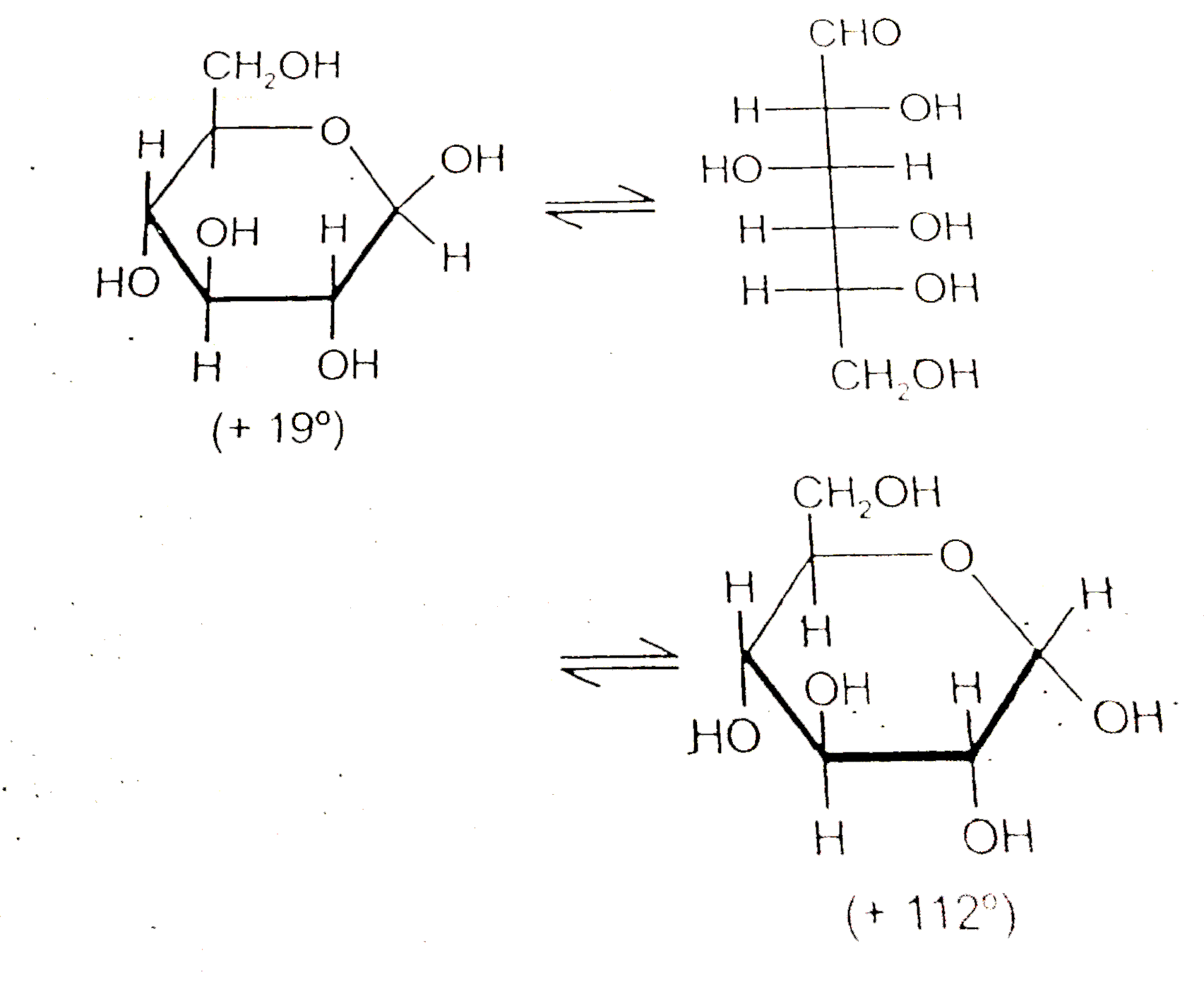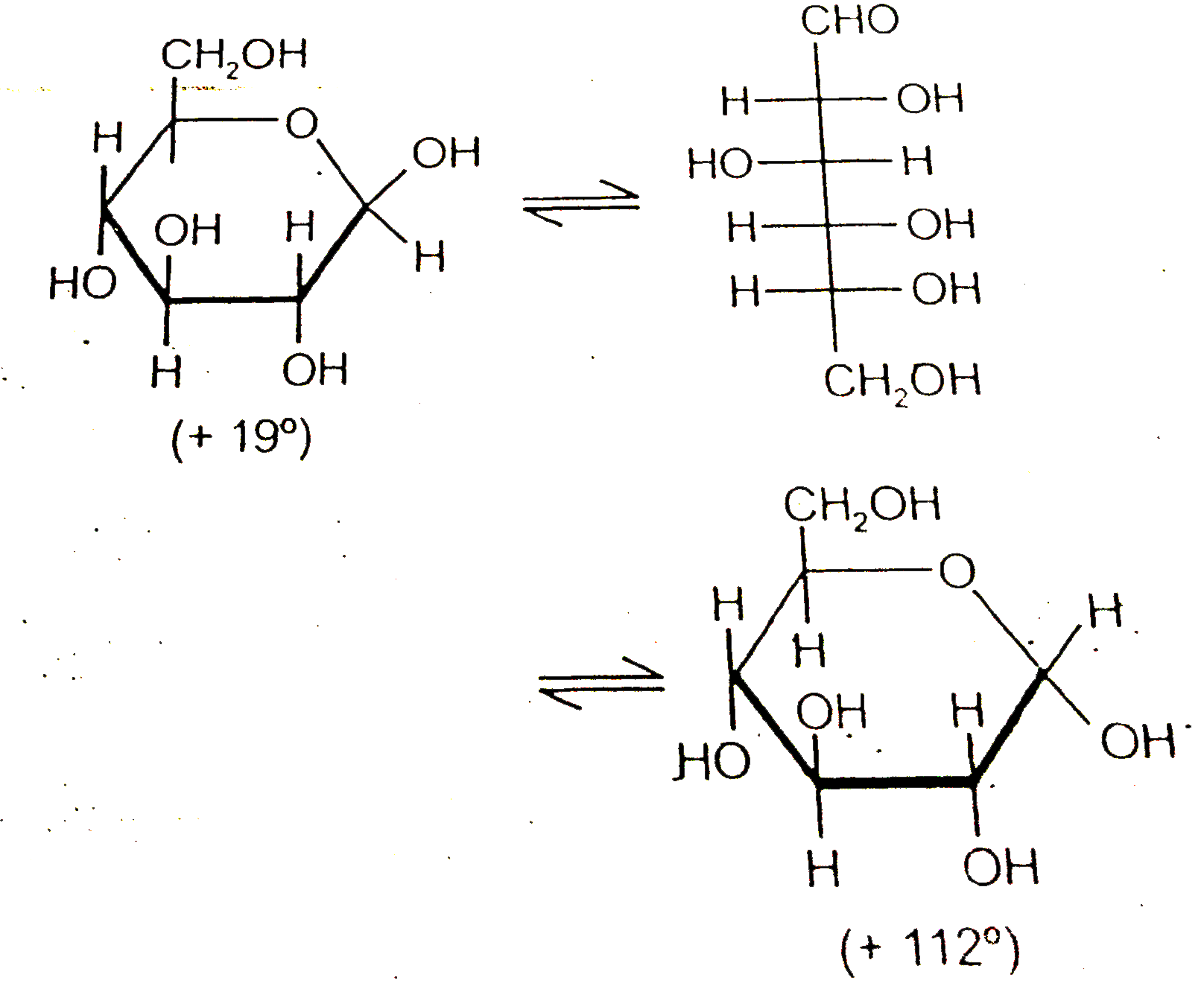When either form of D-Glucose is dissolved In water, the solution gradually changes its optical rotation and finally attains a constant optical rotation of +52∘.

Which form of D-GIucose is more stable?
αD-Glucose
βD-Glucose
Open chain
All forms are equally stable
The correct Answer is:B
Step by step video & image solution for When either form of D-Glucose is dissolved In water, the solution gradually changes its optical rotation and finally attains a constant optical rotation of +52^(@). Which form of D-GIucose is more stable? by Chemistry experts to help you in doubts & scoring excellent marks in Class 12 exams.
Topper's Solved these Questions
- BOOK - AAKASH INSTITUTE ENGLISHCHAPTER - BIOMOLECULESEXERCISE - Section-E (Assertion-Reason Type Questions )5videos
BIOMOLECULES
- BOOK - AAKASH INSTITUTE ENGLISHCHAPTER - BIOMOLECULESEXERCISE - Section-E (Matrix match Type Questions )6videos
BIOMOLECULES
- BOOK - AAKASH INSTITUTE ENGLISHCHAPTER - BIOMOLECULESEXERCISE - Section-C (Objective Type Questions (More than one option is correct))10videos
BIOMOLECULES
- BOOK - AAKASH INSTITUTE ENGLISHCHAPTER - AMINES EXERCISE - Assignment Section -J (Aakash Challengers Questions)9videos
AMINES
- BOOK - AAKASH INSTITUTE ENGLISHCHAPTER - CHEMICAL BONDING AND MOLECULAR STRUCTURE EXERCISE - Assignment Section J (Aakash Challengers Questions)10videos
CHEMICAL BONDING AND MOLECULAR STRUCTURE
Similar Questions
When either form of D-Glucose is dissolved In water, the solution gradually changes its optical rotation and finally attains a constant optical rotation of +52∘.

Which of the following statements, is true?View SolutionWhen either form of D-Glucose is dissolved In water, the solution gradually changes its optical rotation and finally attains a constant optical rotation of +52∘.

What is the percentage of open chain D-Glucose in solution?View Solution
Knowledge Check
- Question 1 - Select One
When a metallic oxide is dissolved in water, then the solution formed has a high concentration of which ions
AH+BH3O+COH−DM+ - Question 2 - Select One
D (+) Glucose has melting point 146∘C and specific rotation [α]25D is + 112∘C. Another D(+) Glucose has melting point 150∘C and specific rotational [α]25Dis +18.7∘C. The two form have significantly different optical rotation but when an aqueous solution of either form is allowed to stand, it rotation changes. The specific rotation of one form decreases and rotation of other increases until both solution show the same value +52.7∘. The change in rotation towards an equilibrium value is called mutarotation.

What percentage of β-D-(+) glucopyranose found at equilibrium in the aqueous solution?A50%B≈100%C38%D64%
During mutarotation of β-D-glucose in aqueous solution angle of optical rotation
View SolutionWhich of the following when dissolved in water forms a solution which is non-conducting?
View SolutionA sugar exist in two isomeric form α−D & β−D with specific rotation of 110∘ and 30∘ respectively. When α−D form of the suar is dissolved in water exhibits mutarotation till the equilibrium value of 90∘ is attained. The equilibrium constant of mutarotation of β−D form [Assuming only α and β form in solution] is equal to:
View SolutionWhich of the following when dissolving in water forms a solution which is non-conducting?
View SolutionA solution of d-glucose in water rotates the plane polarised light
View SolutionWhen α−D glucose is dissolved in water, it undergoes a partial converion to β−D glucose to exhibit mutarotation. This conversion stops when 63.6% of glucose is in β form. Assuming that equilibrium has been attained, calculate Kc for mutarotation.
View Solution

